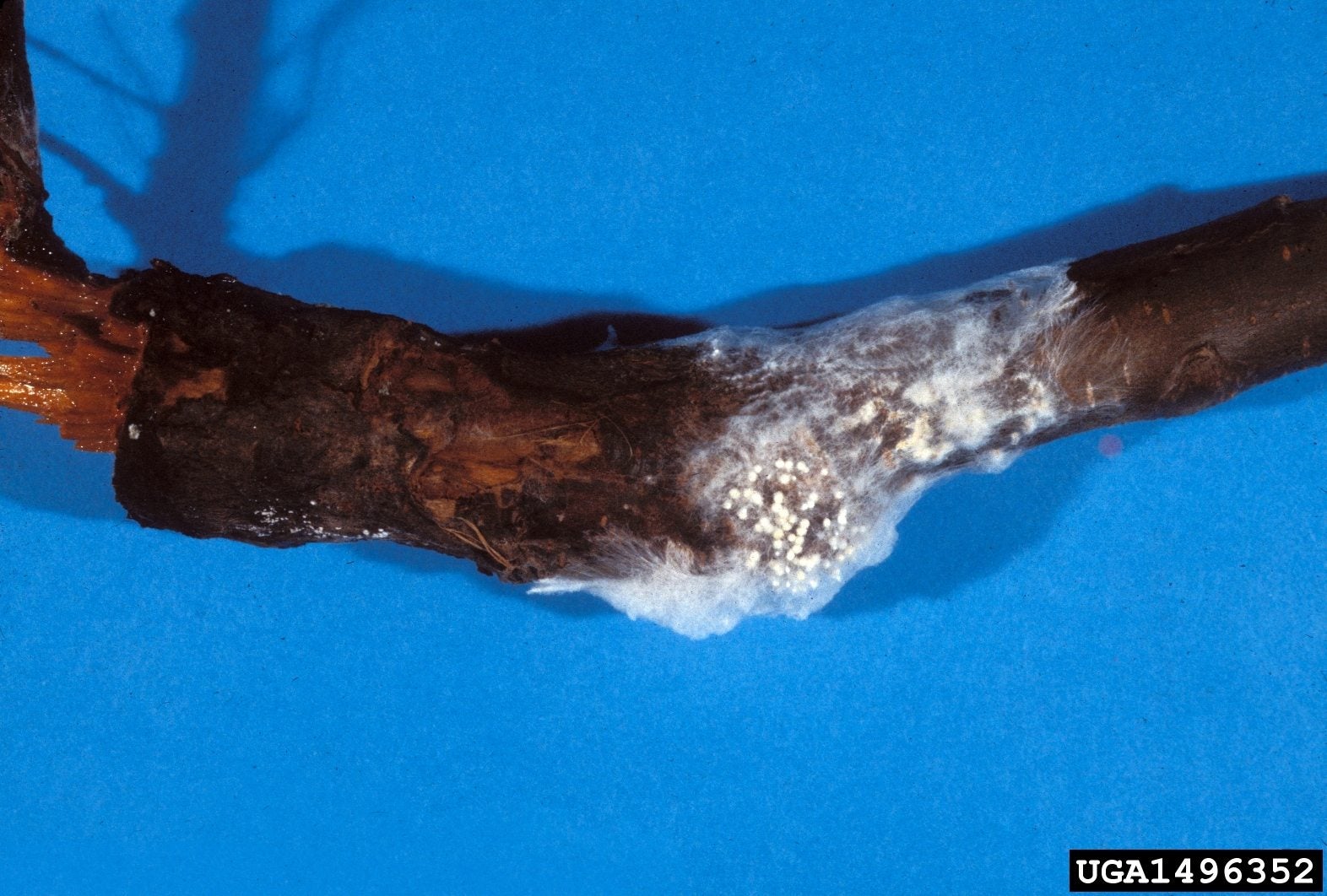Southern Blight Apple Treatment: Recognizing Southern Blight In Apple Trees


Southern blight is a fungal disease affecting apple trees. It’s also known as crown rot and is sometimes called white mold. It is caused by the fungus Sclerotium rolfsii. If you are interested in learning about southern blight in apple trees and southern blight apple treatment, read on.
Southern Blight of Apples
For years, scientists thought that southern blight in apple trees was only a problem in warm climates. They believed that the fungus structures that overwinter were not cold hardy. However, this is no longer considered true. Gardeners in Illinois, Iowa, Minnesota, and Michigan have reported incidents of southern blight of apples. It is now known that the fungus can survive winter cold, especially when it is covered up and protected by layers of snow or mulch. The disease is mostly an issue in apple growing areas in the Southeast. Although the disease is often called southern blight of apples, apple trees are not the only hosts. The fungus can live on some 200 different types of plants. These also include field crops and ornamentals like:
Symptoms of Southern Blight in Apple Trees
The first signs that you have apple trees with southern blight are beige or yellow, web-like rhizomorphs. These growths appear on the lower stems and roots of the trees. The fungus attacks the lower branches and the roots of apple trees. It kills the tree’s bark, which girdles the tree. By the time you notice that you have apple trees with southern blight, the trees are on their way to dying. Typically, when trees get southern blight of apples, they die within two or three weeks after the symptoms appear.
Southern Blight Apple Treatment
So far, no chemicals have been approved for southern blight apple treatment. But you can take steps to limit your tree’s exposure to southern blight of apples. Reduce losses from apple trees with southern blight by taking a few cultural steps.
- Burying all organic material may help since the fungus grow on organic material in the soil.
- You should also regularly remove weeds near the apple trees, including crop residue. The fungus can attack growing plants.
- You can also select the apple stock most resistant to the disease. One to consider is M.9.
Gardening tips, videos, info and more delivered right to your inbox!
Sign up for the Gardening Know How newsletter today and receive a free copy of our e-book "How to Grow Delicious Tomatoes".

Teo Spengler is a master gardener and a docent at the San Francisco Botanical Garden, where she hosts public tours. She has studied horticulture and written about nature, trees, plants, and gardening for more than two decades. Her extended family includes some 30 houseplants and hundreds of outdoor plants, including 250 trees, which are her main passion. Spengler currently splits her life between San Francisco and the French Basque Country, though she was raised in Alaska, giving her experience of gardening in a range of climates.
-
 8 Perfect Flowers To Plant With Tomatoes To Boost Yields & Banish Pests
8 Perfect Flowers To Plant With Tomatoes To Boost Yields & Banish PestsDon’t forget flowers when choosing companion plants for your tomato beds or pots. These pretty, fragrant flowers add beauty but are also highly beneficial.
By Mary Ellen Ellis
-
 Want The Longest Lasting Hydrangea Flowers? Grow These 8 Panicle Hydrangea Varieties
Want The Longest Lasting Hydrangea Flowers? Grow These 8 Panicle Hydrangea VarietiesFor ornamental shrubs that deliver the longest flowering seasons with plush blooms and delicate hues, these panicle hydrangea varieties are essential in your yard
By Tonya Barnett